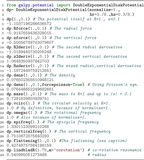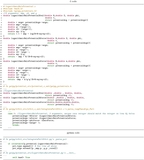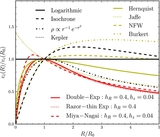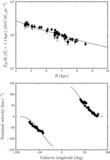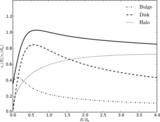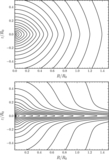Image Details

Caption: Figure 29.
Response of a warm stellar disk to an adiabatically grown quadropole bar. The bar amplitude is grown over ≈41.5 bar periods and then held steady for 4π or two disk rotations at R0 = 1. The background potential is logarithmic and the initial DF is a Dehnen DF with hR = R0/3, hσ = R0, and σR = 0.2vc. The bar potential is of the form in Equation (24) with ROLR = 0.9R0 or Ωb = 1.9Ω0, a current angle between the major axis of the bar and the ϕ = 0 direction of 25°, and a dimensionless bar amplitude of α = 0.01. The three panels show the response in mean radial velocity  , mean rotational velocity minus the axisymmetric mean (
, mean rotational velocity minus the axisymmetric mean ( ), and the vertex deviation lv. As expected, the response in all three has ϕ → ϕ + 180° symmetry. The mean velocity responds most strongly near the outer Lindblad resonance, indicated by the white dashed line, and at corotation, which lies at R = 0.52R0. The bar can induce vertex deviations of typically 15° near the outer Lindblad resonance and around R = 1.3R0.
), and the vertex deviation lv. As expected, the response in all three has ϕ → ϕ + 180° symmetry. The mean velocity responds most strongly near the outer Lindblad resonance, indicated by the white dashed line, and at corotation, which lies at R = 0.52R0. The bar can induce vertex deviations of typically 15° near the outer Lindblad resonance and around R = 1.3R0.
Copyright and Terms & Conditions
© 2015. The American Astronomical Society. All rights reserved.




